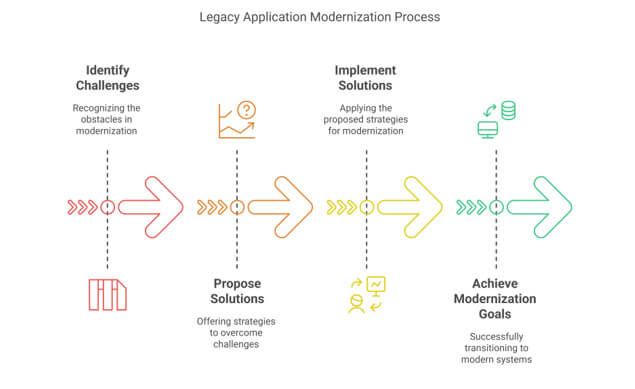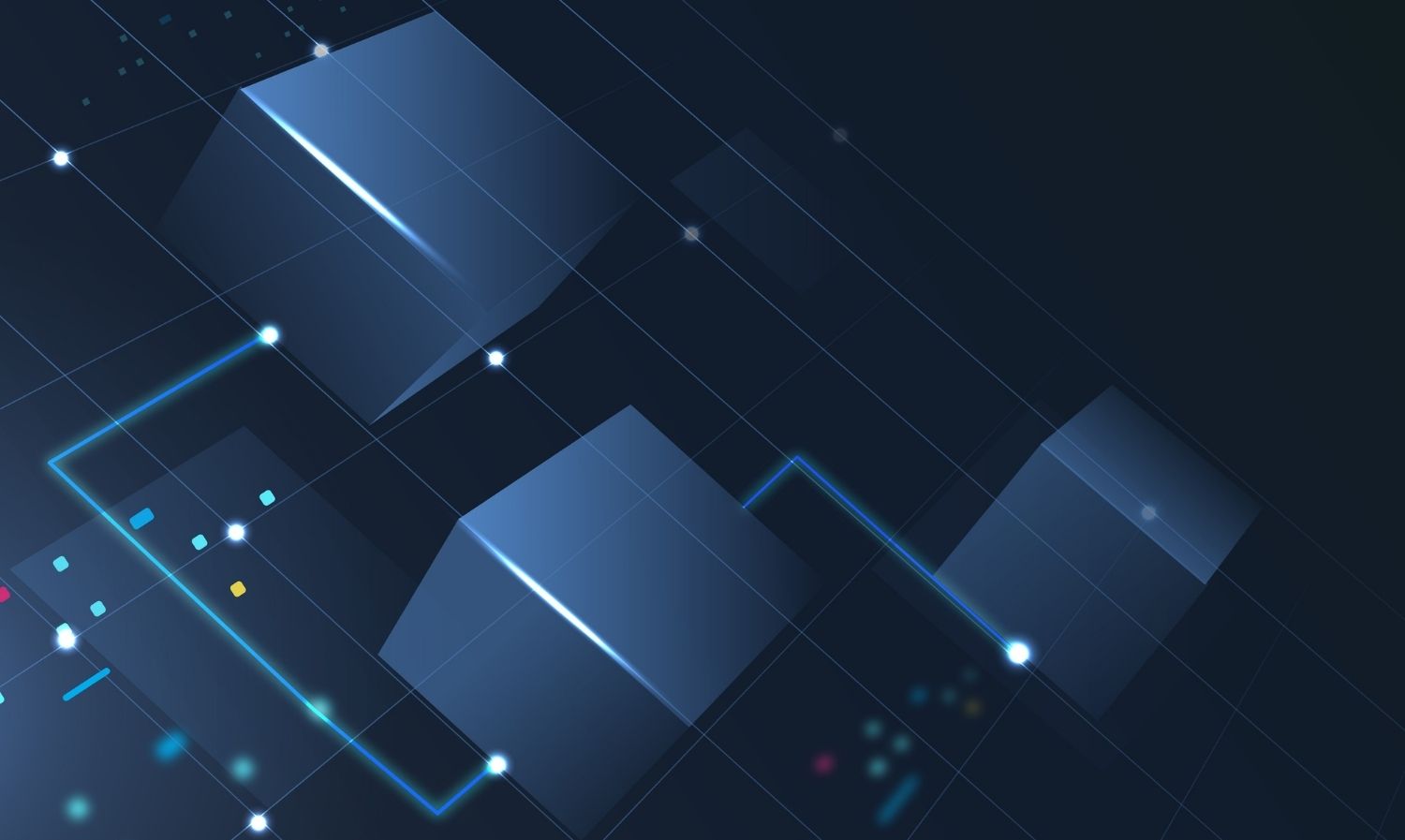- February 25, 2025
Did you know 70-90% of IT dollars are spent keeping legacy systems going? These outdated applications slow innovation and increase security threats. One Gartner survey reveals modernization projects that are flexible and scalable gives businesses a 30% improvement in agility.
As firms forge ahead with digital transformation, the legacy applications must be adapted to address modern aspirations. The two most important approaches to modernization, which serve different purposes, are re-engineering and refactoring.
Refactoring is about restructuring code without changing its functionality, while re-engineering is the full-scale redesign aimed at improving performance, scalability, and integration capabilities.
This article delves into the differences between re-engineering and refactoring, how these approaches feed into the cloud modernization strategy, and how organizations can utilize these methods for future-proofing their IT infrastructure.
Why Modernizing Legacy Applications is Essential
Legacy applications might have been the bedrock of your business long ago, however, in the current dynamic digital landscape, legacy applications turn into a handbrake on growth.
70% of organizations consider legacy systems as the most serious impediment to digital transformation; companies who modernize reap to the tune of 30% in operational efficiency.
Older systems demand more maintenance costs, security, and integration challenges, which makes it harder to cope with changing business demands.
The enhancements related to cloud migration, microservices, and automation in modernizing legacy applications lead to increased scalability, security, and performance coupled with reduced technical debt.
Cost savings, agility, and innovation would open for an organization if it opted for cloud modernization along with exercising intelligent automation solutions, as would keep it ahead of competition in an ever-changing technology landscape.
Understanding Re-Engineering and Refactoring
When companies change, old applications can slow down operations and increase costs. Re-engineering and refactoring are key approaches for modernizing legacy applications, each with its own peculiar outcome and approach.
Both improve system performance and maintainability, but they differ significantly in their objectives, the complexity involved, and the impact they have on the system.
What is Re-Engineering:
Key aspects include:
- Involves significant changes to code, design, and functionality
- Migration strategy for legacy systems to cloud application modernization
- Makes scalability, security, and performance better
- Aids with process automation and integration of AI-enabled automation.
What is Refactoring?
What it does:
- Optimizes code with unchanged core functionality
- Helps improve performance and readability for long-term maintenance
- Gives support to workflow automation and enterprise automation initiatives
- Reduces technical debt while readying for future cloud modernization strategies.
Key Differences Between Re-Engineering and Refactoring
Both reengineering and refactoring have their own purposes in the modernization of legacy applications. However, the two differ in complexity, scope, and impact.
Re-engineering transforms a system change entirely. It fixes major architectural problems or deficiencies in the system’s design and application functionality.
Legacy systems have often become old-fashioned to the stage where they do not work, or become army-age anachronisms, and sometimes even worse, become incompatible with the newest technologies available.
Re-engineering could take place when a business organization has decided to change from monolithic architecture to cloud application modernization or before applying AI-driven automation to enhance operational efficiency.
Usually, legacy system migration strategies accompany process preparation, making the applications to be more scalable, secure, and cost-effective.
Refactoring, on the contrary, is more concentrated on optimization whereby internal code structures are bettered without changing the external functions of the application.
It can be mostly used when a system runs but suffers inefficiencies, outdated code, or is hard to maintain. It helps in workflow automation, providing intelligent automation solutions, and optimizing performance by restructuring code for improved readability and efficiency.
In other words, it is an extremely expensive and time-consuming method of re-engineering, as in most cases, a company completing the re-engineering itself ends up redesigning the entire old system and then moving it up to the new architecture with advanced automation.
Refactoring is more incremental and does not cost a lot; it only includes the code improvements that are necessary to clear the technical debt and enhance long-term maintainability.
These considerations would allow an organization to choose which of the two approaches would be suitable for the company-the strategy suitable for its future growth, infrastructure needs as well as business objectives.
If an application undergoes a complete overhaul to be in line with business demands, then it must be re-engineered. If it only needs enhancements on performance, maintainability, and speed of development, refactoring will suffice.
Both approaches form an essential component in the process of modernizing existing legacy applications and providing a seamless cloud modernization strategy to ensure long-term success for the undertaking.
Challenges in Legacy Application Modernization and How to Overcome

Modernization of legacy applications is highly important for organizations striving towards agility, security, and efficiency. However, the process also has cumbersome challenges that call for careful maneuvering from organizations. The following are obstacles that organizations most typically face, along with their solutions:
1. High Costs and Budget Constraints
Modernization usually requires massive investments in infrastructures, cloud migrations, and skilled resources, hence businesses recoil at the thought of spending that much.
Conduct a cost-benefit analysis to identify high-impact areas and start incremental modernization with its ability to take the investment pressure off ahead of time, relying instead on cloud-based automation and AI-driven automation to reduce upfront costs for transitioning to opened critical systems.
2. Downtime and Business Interruption
Replacement or upgrade of legacy systems is more likely to result in service downtime, and hence productivity loss.
Use a phased migration strategy or hybrid approach under which both old and new systems will run simultaneously. Enterprise automation tools assist in streamlining transitions to keep productive interruptions to a minimum.
3. Compatibility With Modern Technologies
Most legacy applications were not created to talk to modern cloud applications, API, or microservices.
Make possible APIs so that they can communicate with newer systems. Implement cloud modernization techniques, so that sometimes, it scales the applications into more accommodating, cloud-native locations.
4. Complexity of Data Migration
Moving large amounts of historical data while maintaining accuracy and compliance forms the greatest challenge.
Empower intelligent automation solutions for data cleansing and transformation. Automating business processes will yield seamless migration without compromising data integrity.
5. Security Risks plus Compliance Challenges
Most legacy applications lack modern security protocols and are very likely to be exposed to cyber threats.
IT automation services should include the adoption of best practices in security. Risk-based prioritization and implementation of cloud-based remedies that secure sensitive data should be exercised.
6. Resistance to Change from Employees
Adoption of new workflows and automation by employees used to relying on legacy systems often fails. Change management with a hands-on training rollout will be put in place, voicing for overcoming barriers and explaining changes in efficiency and the decreased burden of manual workloads at work due to business process automation is a key point of the messaging.
7. Finding the Right Approach for Modernization
Analyzing whether to re-engineer, refactor, rehost, or totally replace legacy applications has baffled many businesses.
Determines the need of the organization and the complexity of the application vis-a-vis long-term goals. A legacy system migration strategy is included in making precise decisions to match cost, risk, and performance to business objectives.
Conclusion
Legacy modernization is indeed key for agility, security, and competitive advantage. The type of approach-migration, re-engineering, refactoring, or cloud modernization-forms a basis for scalability and innovation.
AI-driven automation, workflow automation, and IT automation services enhance efficiency with the lowest risks. Today, keep your application future-ready for a resilient, high-performing digital tomorrow.
Happy Learning!!
FAQs
How does refactoring improve software performance and maintainability?
Refactoring allows optimization for code structure, reduction of complexity, and enhancement of performance, which increases maintainability and scalability of the software.
What are the challenges of re-engineering legacy applications?
The costs of reengineering a legacy application pose one challenge, the risk of data migration, integration issues, and potential business interruptions are also significant ones.
How can cloud migration support legacy modernization?
Cloud migration would accommodate legacy application modernization on various fronts like scalability, security, and cost-efficiency by implementing cloud-native architectures and automation.
How does HexaCorp help businesses with application modernization?
HexaCorp offers custom pathways for modernization that combine cloud, AI-driven automation, and IT automation services for improved performance and agility.




